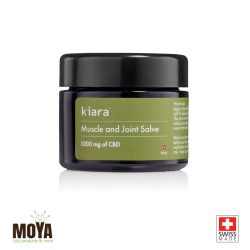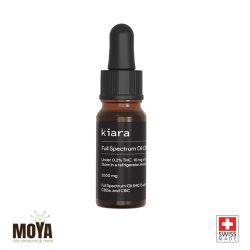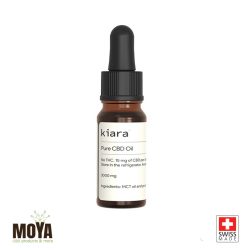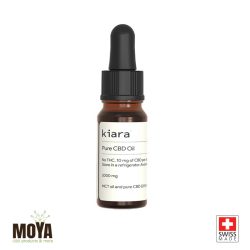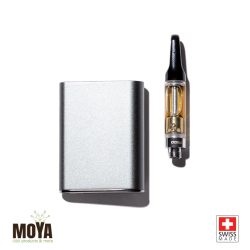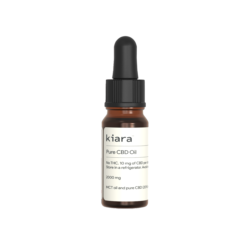The uniqueness of CBD cannabinoid as a natural analgesic
In recent years, concentrated efforts have been made to find therapeutic alternatives with an emphasis on natural compounds for the treatment of chronic pain.
Among all the familiar synthetic alternatives, CBD begins to stand out as a natural analgesic that offers a variety of treatment and consumption methods without increasing the effective dose needed, and without tolerance and dependence. CBD is not one of the usual painkillers and unlike the conventional drugs, CBD does not build in the body tolerance after a long treatment time and there is no need for increased doses.
The uniqueness of cannabidiol in pain relief is the variety of ways in which it works – unlike other drugs that act in a single mechanism of action. In addition to the mechanisms of pain relief, CBD’s ability to reduce anxiety is also well known, which is sometimes a real part of the feeling of pain. It is important to remember that CBD is a natural, non-toxic, and effective, long-term analgesia.
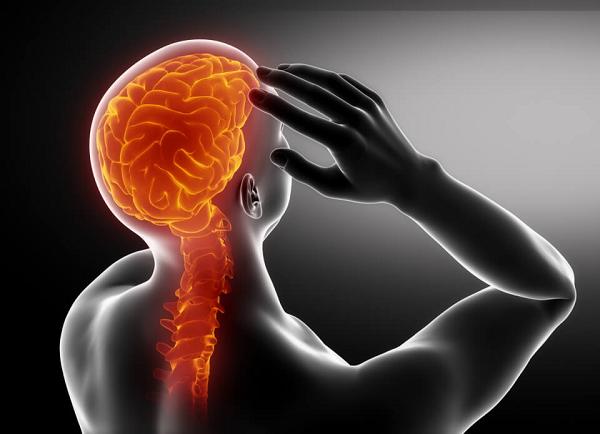
There are three types of Pains:
The first step is determining a diagnosis regarding the source and type of pain that can be classified chronologically as follows:
Sharp (acute) pain
Characterized by high pain intensity, sometimes accompanied by palpitation, nausea and vomiting, rapid heart palpitations, and facial deities that indicate suffering. The typical accompanying emotion is anxiety. This pain usually subsides after a few days and disappears.
Persistent (chronic) Pain
Described and experienced with all the intensity of pain and lacks the “signs of suffering” of sharp pain. The typical accompanying emotion is depression, and if it does not improve, can lead to mental and functional deterioration.
Sharp pain in a patient with persistent (acute and chronic) pain
A person who is in a state of continuous suffering often experiences sharp pain that his body fails to alleviate by itself.
Mechanisms of action of CBD as a natural analgesic for the treatment of chronic pain
Inhibits the sensation of pain that passes through the spine.
Activates a cation channel and neurotransmitters responsible for mitigating the sensation of pain, body heat sensation, and inflammation.
Activates natural opioid receptors of the body and, therefore, can be used to reduce the dose of opioid drugs.
Adenosine receptor bonding that produces, among many other things (such as the activation of sleep mechanism), also a significant anti-inflammatory & pain relief response.
Activation of the 5-HT1A receptor is involved in regulating a range of systems controlling nausea, appetite, anxiety, sleep, and pain sensation.
Inhibition of the transporter protein of adenosine (ENT-1 = Equilibrative Nucleoside Transporter) by CBD causes an increase in the soothing and anaesthetic action of adenosine in parallel with its anti-inflammatory activity.
By regulating the concentrations of adenosine available to cell surface receptors, ENT-1 in humans also affects cardiovascular activity and neuroprotection.
CBD products are selected for the treatment of pain:
-
-
20%
- Salve
Muscle & Joint Salve 1000mg
- £61.00
- Add to basket
-
-
-
20%
- Pure CBD Oil
Pure CBD Oil 3000mg
- £116.00
- Add to basket
-
-
-
20%
- Pure CBD Oil
Pure CBD Oil 2000mg
- £90.00
- Add to basket
-
Chronic pain does not stand alone – it is often accompanied by:
Restlessness and irritability
Fatigue
Inability to sleep (insomnia)
Lack of appetite
Extreme mood changes
Energy decline
Depression, anxiety, and more.
Cannabidiol has many additional virtues that help treat the symptoms associated with pain in addition to the mechanisms of action of the CBD in soothing the pain itself:
Anxiolytic
Balances blood pressure
Antioxidant
Prevents convulsions & nausea
Balancing sleep
Balancing appetite
The study of the effects of the medicinal cannabis plant on known clinical pain syndromes spans more than four decades and although the properties of cannabis are recently studied and not all pharmacological mechanisms of action have been fully discovered. CBD is indisputable for its virtues in relieving pain in the syndromes and diseases in which pain sensation is actively involved.
Over the past few years, numerous studies have been conducted on CBD’s effects on pain, along with the experience of hundreds of thousands of patients and consumers of CBD products marketed in countries where it is legal. The results are extremely encouraging.
CBD was found to be effective as a natural painkiller for various diseases, symptoms, and many types of pain:
Joint Pain
Because of joint swelling, the pain limits movement and reduces the quality of life of the patients. Since CBD suppresses inflammation, the accompanying pain is also weakened. CBD calms inflammation and reduces swelling in the joints and thus also calms the pain. Numerous studies have been done evaluating the effect of CBD on Rheumatoid Arthritis (RA) and the results show a marked reduction in disease symptoms and pain relief.
Multiple Sclerosis (MS)
A disease with an autoimmune background (the immune system attacks normal body proteins) that damages nerve cells in the brain and CNS. The pain of multiple sclerosis increases during spasticity that attacks those suffering from the disease. CBD was found to prevent spasms in MS and thus the pain was also alleviated. CBD is a natural analgesic known for its ability to balance the immune system, reduce inflammation and lower the severity of symptoms of MS. CBD is a potent anti-inflammatory agent in the whole body.
Migraine & Headaches
Headaches often arise from the construction of blood vessels in the brain. The decrease in glucose & oxygen in the brain causes extreme pain. CBD is known to relax and expand small blood vessels, soothing and balancing blood pressure, and as such it is very effective as a natural analgesic in the treatment of headaches and migraine. The first studies in the field supported a longstanding tradition of cannabis use to relieve headaches.
To this day it has been found that the CBD relaxes and heals:
Cluster Type Headache
Migraine
Tension-Type Headache
Since the first studies in the treatment of headaches by CBD and THC, it has been more than a decade and today the personal testimonials of people who experience self-treatment with CBD oil have increased. CBD was found to relieve headaches, abdominal pain, and pains arising from fibromyalgia. Researchers are also continuing to examine new mechanisms of action and classify the medical activity of cannabidiol by types of pain.
Back, Vertebral & Spinal Pain:
Studies conducted on mice with induced vertebral manipulation found that CBD treatment caused a decrease in damage to the vertebrae. Also in man, vertebral pain is caused by the movement of one or more of the spinal vertebrae from their natural place and damage to the delicate cartilage tissues between the vertebrates. As a result, the production of joint fluid increases, and it becomes swollen, inflammatory, hot, and a source of persistent radiating & continuous pain. CBD calms inflammation, lowers swelling in the joint, and consequently, the pain decreases considerably.
Pain-related to Fibromyalgia:
Fibromyalgia mainly affects women, is characterized by pain in the joint areas, muscles, vertebrae, skin, and more, and is considered an incurable disease, and no unique drug was found. Inflammation often develops in the areas in which pain arises, and that is what CBD treats. The anti-inflammatory effect of CBD helps the body cope with other symptoms of the disease such as irregular sleep, anxiety, depression, and chronic fatigue.
The anti-inflammatory effect of CBD and the protection of nervous system cells.
The anti-inflammatory effect of CBD as a natural painkiller in the CNS has been studied in the past and continues to be conducted at the largest research institutes in the world. Already today we know that one of the properties of CBD as a natural analgesic is the protection of nervous system cells.
Pain In Alzheimer Disease (AD) & Dementia
The creation of the harmful Amyloid-Beta Protein in the brains of Alzheimer’s patients causes the disease, and in lowering protein production begins the cure of AD. A normal nervous system will help the body cope with pain and CBD in addition to preventive treatment in the nervous system also provides support as a natural analgesic – it is a mutual action that adds to the balance of the body and the various systems.
The use of CBD as an antioxidant, and as a significant cause of significant relief in inflammatory processes in the body, will also be beneficial as a supportive and accompanying treatment for those suffering from chronic pain in the nervous system.
Our range of products in the Moya CBD store
-
Vaporizers (2)
CBD DISTILLATE VAPE KIT Recommended for fast relief of pain, stress, nausea and more (550mg CBD / ml) Product Benefits: A quick, elegant and convenient way for consuming CBD High CBD concentration High availability of active ingredients (rapid absorption) Easy and convenient to use No smell of smoke No polyglycol or glycerin (as with most evaporation liquids) Free of tobacco,… -
Tinctures (2)
100ml Tincture With Pipette Recommended for acute pain, inflammation, neuropathic pain, endometriosis, muscle and joint pain and much more... CBD Oil Full Spectrum1000mg CBD Contains Less Than 0.2% THC Additional herbal extracts: Ginger, Corydalis Yan-hu-suo, European Angelica (Norwegian angelica), Angelica Medical (Angelica archangelica Radix, Zanthoxylum Spp) -
Salve (3)
KIARA's Muscle and Joint Pain Ointment is an anti-inflammatory CBD ointment aimed to act into deep tissue. The ointment penetrates the deep tissues and helps reduce inflammation, while speeding up the body's natural healing process. Made from a combination of 100% herbal extracts and full spectrum extraction, the ointment helps soothe inflammation, soothe tremors and muscle pain along with support for the body's… -
Pure CBD Oil (4)
10ml bottle About 220 Drops Pure CBD Isolate Oil THC-Free Carrier Oil: MCT Oil High Concentration of CBD 100% Extracted From Organic Hemp Plant Gluten Free Vegan Non-GMO FSA Certified
Most Common Questions About Pain Relief:
Although many consumers report immediate relief from CBD pain does not work like an analgesic pill whose function is to bind to one or two target proteins (receptor, receptor) in the human body. CBD acts on about 60 target proteins in the body but it has not been fully attached to anyone. Therefore, CBD’s effect on pain typically ranges from 4 hours to 5 days, depending on the intensity of the pain, the dose you are taking and the quality of the product. The advantage of CBD is that once you have found the appropriate dosage the body hardly develops tolerance to CBD and therefore you will not need to increase doses.
Finding the right dosage for solving pain problems consists of several factors: pain intensity, body weight, age, general health condition, sporting lifestyle, proper nutrition and more. since each person has an endocannabinoid system that responds to external cannabinoids differently – finding the appropriate dosage is completely individual.
We recommend starting with taking two drops a day for two or three days and then going up to three drops for two days and so on – to the point where pain relief is clear. after reaching this point there is no need for a dose increase.
CBD can be consumed in a variety of ways and in a variety of products. CBD oil is considered a way in which the absorption of the active substance is rapid, utilizing the active substance by the body is considered very effective in taking CBD in the form of oil and most importantly – it is possible to accurately measure how much mg of CBD per day makes you feel pain relief. Taking CBD ingestion using capsules or CBD-enriched foods is a way in which the absorption of the active substance is slower but in this way there is maximum utilization of the active substance.
Taking CBD in evaporation is considered especially suitable for relieving flammable pain and allows mobility and accessibility during the day in case of an “emergency”. Ointments and creams for applying to the skin are also considered a great way to relieve joint pain, muscles and more.
We recommend taking CBD regularly, especially for people with chronic (persistent) pain. CBD takes between 36 hours and 72 hours to fully clean up the body and therefore even if you forgot to take your daily dose – usually the body will utilize CBD molecules that still flow throughout the bloodstream.
Some people who for different considerations choose to take CBD just before an acute seizure and it works very well for them as well. The decision and familiarity with the CBD is all about you. We will be happy to help and advise you in the process.
We recommend taking CBD in the morning, after brushing your teeth and not drinking coffee for about 20 minutes before and after taking. You can drink water to wash the flavour but it is best to let the oil absorb itself. But this is not binding at all. Some people have decided to take their daily dose at any other time of the day and this is entirely possible if it works for them.
Read more on: When is the best time to take CBD during the day
Daily doses can be dispersed throughout the day and night. If you take this approach, make sure you follow symptoms relief patterns and the amount of CBD you consume.
As part of the FDA-approved safety trials conducted for a CBD-based drug called Epidiolex, doses of 600 – 1200 mg of pure CBD per day were given to children suffering from a rare epileptic syndrome called Dreh syndrome. At a dose of 600 mg per day, no significant side effects were observed and no liver toxicity developed, which signals an “overdose” condition.
In 2018, a World Health Organization (WHO) committee of experts on narcotic substances was reviewed in formulating reviews on the medicinal properties of cannabinoid CBD (cannabidiol) published its recommendations report with the headline: CBD is a substance with extensive and significant medical potential. The report presented by the Experts Committee officially states: “No potential harm or addiction has been proven as a result of CBD use. Studies of experimental addiction models have found that CBD has no addictive effect in the model for the diagnosis between addictive drugs in animals, it has been discovered that CBD fails to be used as a substitute for THC and as mentioned, in light of the widespread use of patients around the world it can be determined that people do not develop any dependence on CBD and cannot be used or abused.
The Endocannabinoid Deficiency Syndrome (EDS) theory
In 2008, the Endo-cannabinoid deficiency theory was raised, claiming that three diseases: Migraine, fibromyalgia, and irritable bowel syndrome (IBS), have similar and/ or common clinical, biochemical and pathophysiological symptoms and patterns.
This theory links the symptoms of these diseases to the endocannabinoid system [ECS] and assumes that its dysfunction, resulting from a deficiency in the production of Endo-cannabinoids [eCBs] from an internal source in the body, can be solved by supplying exo-cannabinoids from the cannabis plant (phytocannabinoids [pCBs]).
CBD as a natural analgesic – A variety of benefits and medicinal properties
CBD has many properties that derive from its positive effect on many body systems and because of its variety of properties: CBD is an anti-inflammatory, antioxidant and fights infectious diseases, treats seizures and neurological disorders, relieves nausea, cures intestinal diseases, and improves cardiovascular health.
In addition, CBD’s ability to reduce anxiety is also well known, as mentioned above – sometimes a real part of the feeling of pain.
Before purchasing CBD products for solving pain problems, it is important to know: CBD is not effective in treating all types of pain but it can treat many types of pain, and most importantly: CBD is a natural analgesic especially suitable for inflammatory or neuropathic pain.
Nerve pain is usually caused by the glutaminergic system, which is a stimulating and primary nerve pathway in the brain & body. Glutamate is the neurotransmitter [NT] responsible for activating neurons. CBD suppresses the release of the neurotransmitter glutamate (Glu) and other pro-inflammatory compounds, making it a capable substance that protects the cells of the nervous system (neuroprotective) especially in the treatment of the combustion prickly sensations that characterize nerve pain. Along with other natural supplements like magnesium [Mg], CBD can also be a natural analgesic that also protects nervous system cells as a prophylactic treatment.
When the inflammatory cells accumulate due to chronic conditions, it is called inflammatory pain.
Pain as a result of inflammation is often associated with nerve pain except that it is not limited to nerve cells. An example of inflammatory pain in all types of arthritis, some immune diseases like Crohn’s disease, gastric ulcer, and simple situations like headaches, cramps, and muscle pain. A lot of problems arise when cells are damaged due to injury or as a result chronic illness. When the body feels the damage, it alerts the inflammatory cells to action.
CBD and the treatment of pain as a result of inflammation
The anti-inflammatory mechanism of cannabidiol is unique. It does not work like other anti-inflammatory drugs by suppressing the enzymes COX-1 and COX-2 – so there is no risk of developing gastrointestinal ulcers or heart attacks (as in many cases of current anti-inflammatory drugs). Numerous studies have found that the ability of CBD and THC to soothe inflammatory pain is twenty times higher than recognized anti-inflammatory drugs like ibuprofen (ibuprofen).
The virtues of CBD in treating the pain associated with gastrointestinal (GI) problems
When it comes to chronic gastrointestinal [GI] disorders, CBD is effective against many inflammatory & painful symptoms:
1. CBD suppresses the increased release of cytokines, monokines, and chemokines and in several laboratory models, it has been found to increase the production of T-regulatory cells in the immune system that function in suppressing inflammation, as a natural mechanism for suppressing the excessive inflammatory response.
2. CBD has been found to indirectly act on CB1 receptors by suppressing the enzyme FAAH that degrades AEA, allowing anandamide to act for a longer period and bind to the CB1 receptor.
3. CBD inhibits the mobilization of cells in the gut (lymphocytes & macrophages) to the inflammatory area of the intestines resulting in suppressing the release of TNFα that triggers an enhanced inflammatory response.
Most common questions about CBD for Pain Relief:
Is the pain relief after taking CBD immediately?
Although many consumers report immediate relief of pain from the first drop of CBD oil, it does not work like an analgesic pill whose function is to bind to one target protein in the human body. CBD acts simultaneously on about 60 target proteins in the body. Therefore, CBD’s effect on pain typically ranges from 4 hours to 5 days, depending on the intensity of the pain, the genetic background, the dose you are taking, and the quality of the product. The advantage of CBD over conventional pain killers is that once you have found the appropriate dosage, the body does not develop tolerance to CBD’s effects and therefore you will not need to increase the dose.
What is the recommended dose for chronic pain?
Finding the right dosage for solving pain problems consists of several factors: pain intensity, body weight, age, general health condition, sporting lifestyle, proper nutrition, and more. Since each person has an endocannabinoid system that responds to external cannabinoids differently – finding the appropriate dosage is completely individual. We recommend starting with taking two drops a day for two or three days and then going up to three drops for two days and so on – to the point where pain relief is clear. After reaching this point, there is no need for a dose increase.
Which is the best way to take CBD to treat chronic pain?
CBD can be consumed in a variety of ways. CBD oil is considered a way in which the absorption of the active substance is rapid. Utilizing the active substance by the body is considered very effective in taking CBD in the form of oil, and most importantly – it is possible to accurately measure how much CBD (mg) per day makes you feel pain relief. Ingestion of CBD using capsules or CBD-enriched foods & beverages is a way in which the absorption of the active substance is slower. Taking CBD by evaporation is considered especially suitable for relieving acute pain and allows mobility during the day in case of an “emergency”. Ointments, lotions, and creams applied to the skin and CBD transdermal patches are also considered a great way to relieve joint, muscle, and skin pain.
Should CBD be used regularly or before a pain attack?
We recommend taking CBD regularly, especially for people that suffer from chronic (persistent) pain. It takes between 36-72 hours to fully clean up CBD from the body and therefore even if you forgot to take your daily dose – usually, the body will utilize those CBD molecules that still flow throughout the bloodstream or are stored inside fat tissue. Some people who, for different considerations, choose to take CBD just before an acute seizure – it works very well for them as well. The decision and familiarity with CBD oil are all individuals.
Is there a fixed time of day for taking CBD or is it possible at any time?
We recommend taking CBD in the morning, and not drinking coffee for about 20 minutes before and after taking CBD oil. You can drink some water to wash out the flavour, but it is best to let the oil absorb in the mouth by itself. Some people have decided to take their daily dose at any other time of the day and this is entirely possible if it works for them.
Is it possible to disperse the dose of CBD oil drops throughout the day?
Daily doses can be dispersed (divided) throughout the day and night. If you take this approach, make sure you follow symptoms relief patterns and check carefully the amount of CBD you consume.
Are there any CBD overdoses?
As part of the FDA-approved safety trials conducted for a CBD-based drug called “Epidiolex”, doses of 600 – 1200 mg of pure CBD per day were given to children suffering from a rare epileptic syndrome called Dravet syndrome. At a dose of 600 mg per day, no significant side effects were observed and no liver toxicity developed, which may signal an “overdose” condition.
Is CBD safe to use?
In 2018, a World Health Organization (WHO) committee of experts on narcotic substances, reviewed the medicinal properties of the cannabinoid cannabidiol and published its recommendations report with the headline: “CBD is a substance with extensive and significant medical potential”. The report presented by the Experts Committee officially states: “No potential harm or addiction has been proven as a result of CBD use. Studies of experimental addiction models have found that CBD has no addictive effect.” In the model for the diagnosis between addictive drugs in animals, it has been discovered that CBD fails to be used as a substitute for THC, and as mentioned above, in light of the widespread use by patients all around the world, it can be determined that people do not develop any dependence on CBD and CBD cannot be abused [have no recreational value].
How do I define what pain is?
The experts of the International Association for the Study of Pain (IASP) defined pain as “a sensory and emotional experience, unpleasant, associated with real or potential tissue damage or described in terms of such damage”. In many cultures, pain is considered a physical injury, and since it can significantly impair the quality of life of the individual, it is the most common symptom that leads to a doctor’s appointment.
In many cases the feeling of physical pain also causes emotional suffering and the greater the intensity of the pain, the more the pain is accompanied by anxiety and the urge to stop ASAP the pain sensation. This defines pain as both a feeling and an emotion. Pain, especially acute pain, is a stress factor that leads to arousal and a characteristic physical reaction that manifests, for example, in the increase in blood pressure and heart rate. Pain that lasts over a long time directly causes mental and functional deterioration, sometimes to complete dependence on the medical system and strong painkillers, such as opioids.
Classification of pain according to the affected area of the neural transmission system
The feeling of pain is usually the result of the processing of the signals caused by changes in the tissues. These changes are felt by receptors found at the ends of peripheral nervous system [PNS] cells, also called nociceptive nerves.
These signals are transmitted along the nerve fibres to the spinal cord, which belongs to the central nervous system [CNS], and from the point of absorption in the spinal cord, the signals are transmitted along neural pathways to physical and emotional “data processing” centres in the brain. Here’s the classification:
A. Nociceptive pain is the “normal” pain, which originates from tissue damage. It’s transmitted through neural pathways.
B. Peripheral neuropathic pain: Pain resulting from damage to peripheral neural pathways.
C. Central neuropathic pain: Pain that results from damage to the neural pathways inside the CNS, spinal cord, or the brain tissue inside the skull.
Classification of pain by symptoms
There are several clinical syndromes, the main component of which is pain such as migraines or complex regional pain syndrome, Rheumatoid Arthritis (RA), and more.
Classification of pain according to mixed tissue
A. pain of muscular origin (Myofascial)
B. Joint pain
C. Bone pain
D. Visceral pain that originates from an internal organ (a type of abdominal pain)
E. Ischemic pain (lack of oxygen) resulting from insufficient blood supply to certain organs or tissues.
F. Neuropathic pain originates not from damage to the tissue or organ, but rather to damage to the neural pathways themselves that lead the pain sensation from the tissue and/ or the organ to the centre of sensation (the brain).
CBD is not effective in treating all types of pain but can treat many types of pain, Therefore, it is very important to understand the origin and nature of pain:
Is it getting worse with weather changes?
Does it have one focus or is it spread all over his body?
Does it cause swelling?
Is it stabbing or muffled?
Does it develop and intensify throughout the day or begin in the evening?
What symptoms are associated with the pain sensation?
It is important to share with your doctor when you are interested in starting to add CBD to treat chronic pain. Finding the right dosage and understanding the properties unique to CBD as a natural painkiller is important for the process.
Read more in studies on CBD and pain management:
Cannabinoids suppress inflammatory and neuropathic pain by targeting α3 glycine receptors
Non-psychoactive Cannabinoids Modulate the Descending Pathway of Antinociception in Anaesthetized Rats Through Several Mechanisms of Action
Meta-analysis of Cannabis-Based Treatments for Neuropathic and Multiple Sclerosis-Related Pain
Mechanisms of action of CBD as a natural treatment of persistent (chronic) pain
1. Mechanism of action in pain relief of CBD as an agonist of GlyRs:
The stimulant neurotransmitter, glycine (Gly) is involved in transmitting the sensation of pain along the spinal cord. Recent studies have found that CBD binds to the amino acid Serine (Serine #296), which is part of the transmembrane component of the α3 Gly receptor. This implies that the CBD will change the structure of the α3 receptor in a way that will inhibit the sensation of pain that passes through the spine. The pain will be sent from the painful area through the spinal neurons but it will not reach the brain because CBD effect the Gly receptors. This way, CBD soothes a lot of types of chronic pain.
2. Activating cation channels that are involved in a feeling of pain
Cannabidiol causes activation and opening of the cation channel – TRANSIENT RECEPTOR POTENTIAL VANILLOID (TRPV-1) that is responsible for the recession of pain, also controlling body heat, and inflammation. The activation of this ion channel by CBD calms the feeling of pain, suppresses inflammatory processes, and lowers body temperature.
3. Allosteric inhibition of opiate receptors:
In our bodies, natural opioid substances like Endorphin and Enkephalin are found. Their job is to silence pain naturally. Most chronic pain sufferers are treated with external opioids and because CBD is an allosteric inhibitor of some opioid receptors, fewer internal opioids are needed to relieve pain.
4. Adenosine receptor binding:
Among the variety of mechanisms of action of the CBD, there is also its binding to adenosine receptors, which produce, among many other things (such as the sleep mechanism) also a significant anti-inflammatory reaction, which helps to calm many sources of the pain itself.
5. Activation of the serotonin receptor 5-HT1A:
Serotonin [5-HT] is a neurotransmitter in the nervous system which is involved in regulating a series of effects that include: nausea, appetite, anxiety, sleep, pain sensations, and addiction. CBD binds to the 5-HT1A receptor, activating it to produce pain-relieving sensations along with sedation of the digestive system.
More reading –
Cannabidiol prescription in clinical practice: an audit on the first 400 patients in New Zealand
A Review of the Use of CBD and Other Cannabinoids in Pain Management
The Effects of Cannabis Among Adults With Chronic Pain and an Overview of General Harms
Cannabinoid Delivery Systems for Pain and Inflammation Treatment
Cannabinoids for neuropathic pain
Variations in the cannabinoid receptor 1 gene predispose to migraine
The endocannabinoid system and migraine
Cannabinoids and hallucinogens for headache
Effects of anandamide in migraine: data from an animal model
The Use of Cannabis for Headache Disorders
Experience of migraine, its severity, and perceived efficacy of treatments among cannabis users
Involvement of the endocannabinoid system in osteoarthritis pain
Want to experience our quality CBD products?
MOYA recommends several products suitable for treating a variety of problems, it is worth taking a look at the store and learning our many products. For free advice and to select the right product for you – contact us




